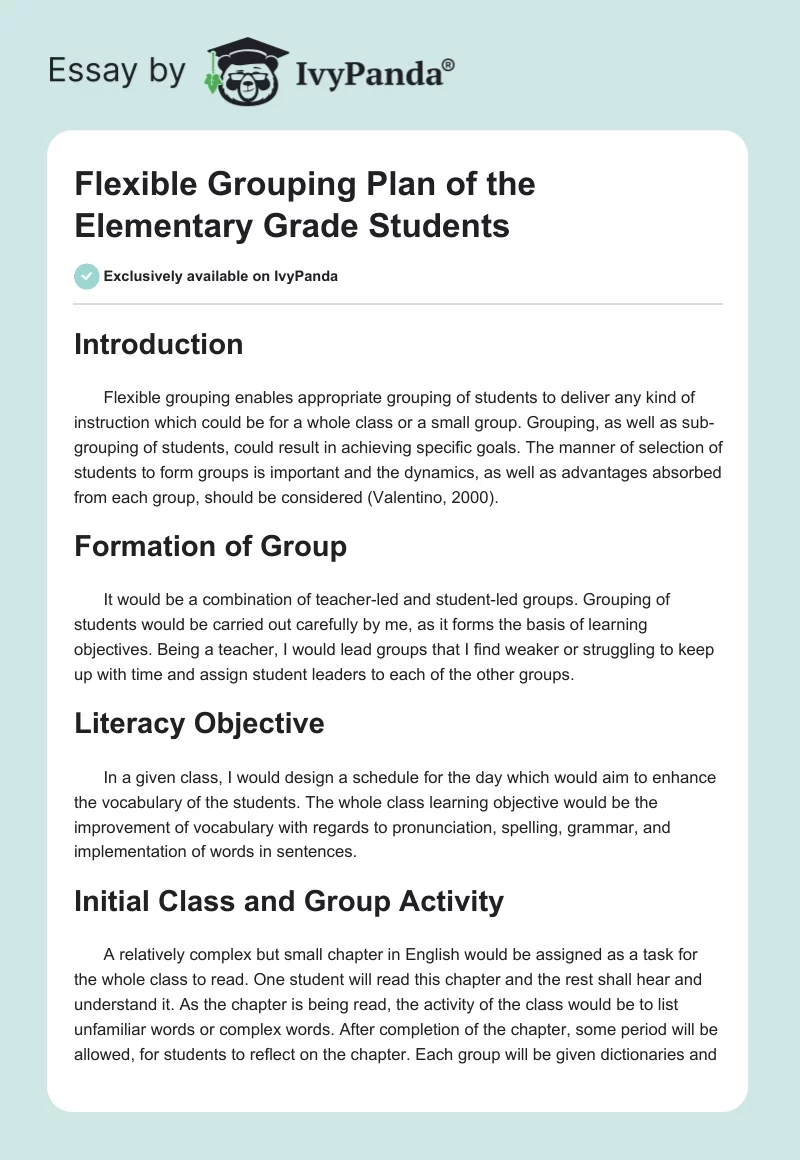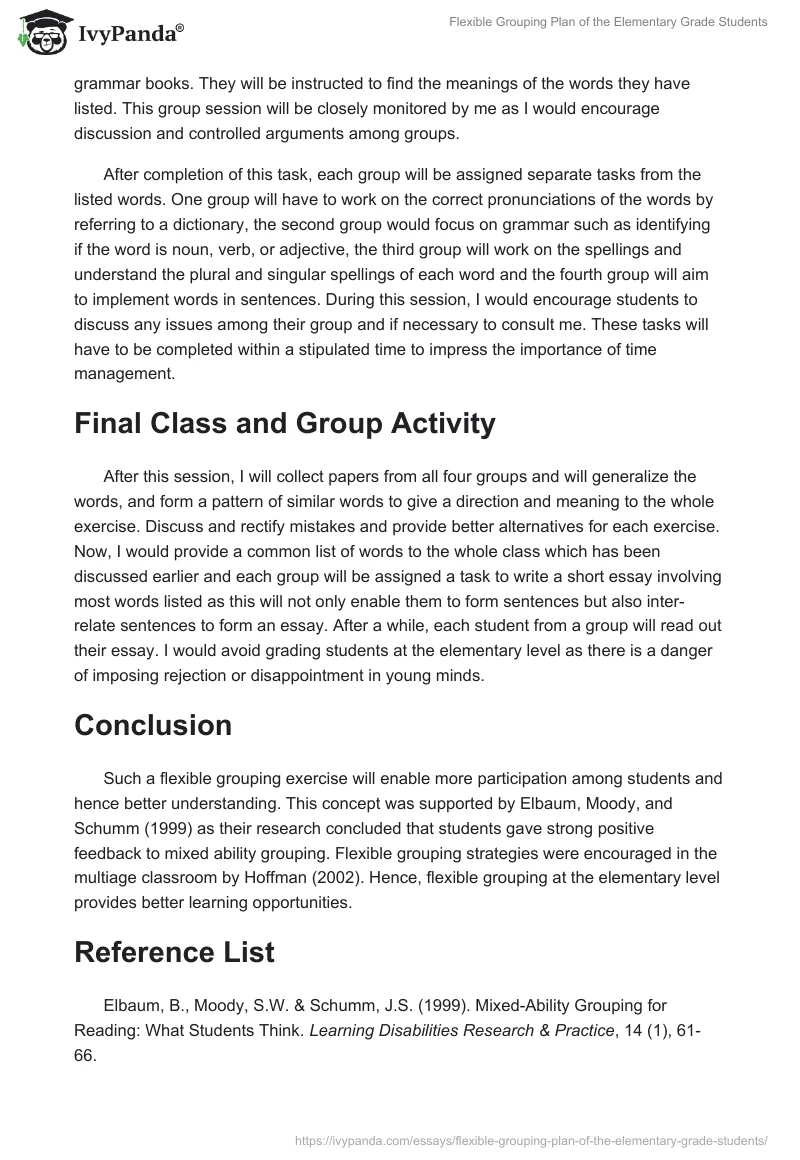Introduction
Flexible grouping enables appropriate grouping of students to deliver any kind of instruction which could be for a whole class or a small group. Grouping, as well as sub-grouping of students, could result in achieving specific goals. The manner of selection of students to form groups is important and the dynamics, as well as advantages absorbed from each group, should be considered (Valentino, 2000).
Formation of Group
It would be a combination of teacher-led and student-led groups. Grouping of students would be carried out carefully by me, as it forms the basis of learning objectives. Being a teacher, I would lead groups that I find weaker or struggling to keep up with time and assign student leaders to each of the other groups.
Literacy Objective
In a given class, I would design a schedule for the day which would aim to enhance the vocabulary of the students. The whole class learning objective would be the improvement of vocabulary with regards to pronunciation, spelling, grammar, and implementation of words in sentences.
Initial Class and Group Activity
A relatively complex but small chapter in English would be assigned as a task for the whole class to read. One student will read this chapter and the rest shall hear and understand it. As the chapter is being read, the activity of the class would be to list unfamiliar words or complex words. After completion of the chapter, some period will be allowed, for students to reflect on the chapter. Each group will be given dictionaries and grammar books. They will be instructed to find the meanings of the words they have listed. This group session will be closely monitored by me as I would encourage discussion and controlled arguments among groups.
After completion of this task, each group will be assigned separate tasks from the listed words. One group will have to work on the correct pronunciations of the words by referring to a dictionary, the second group would focus on grammar such as identifying if the word is noun, verb, or adjective, the third group will work on the spellings and understand the plural and singular spellings of each word and the fourth group will aim to implement words in sentences. During this session, I would encourage students to discuss any issues among their group and if necessary to consult me. These tasks will have to be completed within a stipulated time to impress the importance of time management.
Final Class and Group Activity
After this session, I will collect papers from all four groups and will generalize the words, and form a pattern of similar words to give a direction and meaning to the whole exercise. Discuss and rectify mistakes and provide better alternatives for each exercise. Now, I would provide a common list of words to the whole class which has been discussed earlier and each group will be assigned a task to write a short essay involving most words listed as this will not only enable them to form sentences but also inter-relate sentences to form an essay. After a while, each student from a group will read out their essay. I would avoid grading students at the elementary level as there is a danger of imposing rejection or disappointment in young minds.
Conclusion
Such a flexible grouping exercise will enable more participation among students and hence better understanding. This concept was supported by Elbaum, Moody, and Schumm (1999) as their research concluded that students gave strong positive feedback to mixed ability grouping. Flexible grouping strategies were encouraged in the multiage classroom by Hoffman (2002). Hence, flexible grouping at the elementary level provides better learning opportunities.
Reference List
Elbaum, B., Moody, S.W. & Schumm, J.S. (1999). Mixed-Ability Grouping for Reading: What Students Think. Learning Disabilities Research & Practice, 14 (1), 61-66.
Hoffman, J. (2002). Flexible Grouping Strategies in the Multiage Classroom. Theory Into Practice, 41 (1), 47-52.
Valentino C. (2000). Flexible Grouping. Web.


